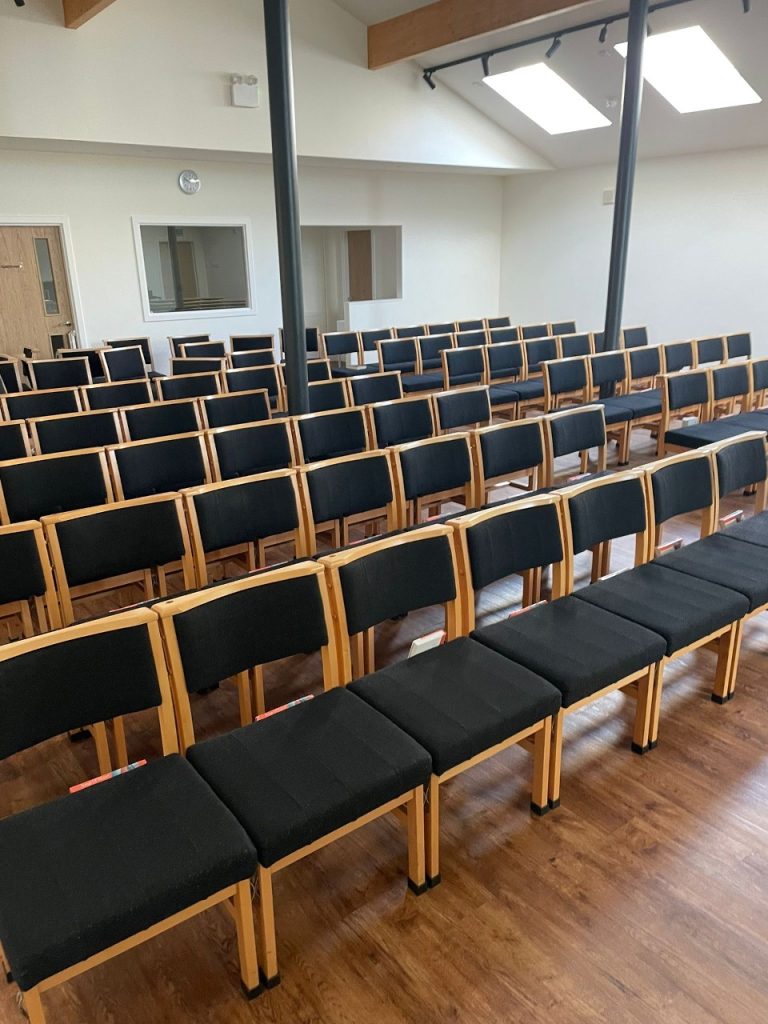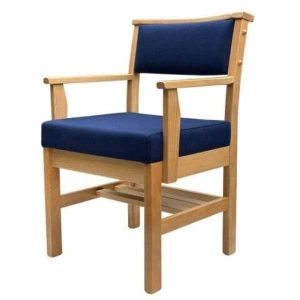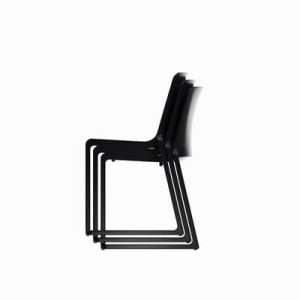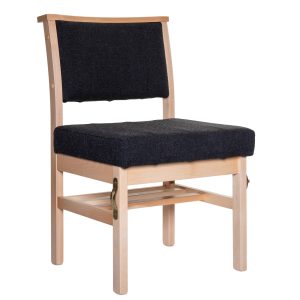
How Wooden Chapel Chairs Can Accommodate All Congregants
Creating an inclusive worship space is essential for ensuring that all congregants, regardless of their physical abilities, feel welcome and comfortable. In a chapel setting, seating plays a critical role in fostering this sense of belonging. With thoughtful planning and design, chapel chairs can be adapted to accommodate all worshippers, from those with mobility challenges to families with small children. This article will explore the importance of accessibility in chapel seating and highlight key features like wheelchair-friendly layouts and adjustable chairs to create an environment that is inclusive for everyone.
The Importance of Accessibility in Chapel Seating
Accessibility goes beyond simply providing space for wheelchair users. It encompasses the design and layout of the seating arrangement, ensuring that everyone can comfortably participate in worship, regardless of age or ability. Chapel seating should cater to the needs of the elderly, people with disabilities, parents with young children, and anyone else who might require special accommodations.
By incorporating accessible features, chapels can create a welcoming atmosphere that aligns with the core values of inclusivity, empathy, and community. Not only does this demonstrate a commitment to all congregants, but it also ensures that everyone can participate fully in the service without feeling excluded or uncomfortable.
Key Features of Accessible Chapel Chairs
To accommodate diverse needs, here are some essential features that chapel chairs should offer:
1. Wheelchair-Friendly Layouts
A major aspect of accessibility is providing ample space for wheelchair users to move freely around the chapel and find seating. While traditional pews might make it difficult to create these spaces, modular and stackable wooden chapel chairs allow for flexible seating arrangements. For example, brands like York Deluxe and Staunton Deluxe offer wooden chairs that can be arranged in ways that leave gaps for wheelchairs, allowing for easy access to various sections of the chapel.
Chairs can be removed or rearranged to create designated spaces for wheelchair users, ensuring that they can sit with their family and friends rather than being relegated to the back or side of the room. This not only makes the chapel more inclusive but also allows for a more personalised and comfortable worship experience.
2. Chairs with Arms for Extra Support
Many elderly congregants or those with limited mobility benefit from chairs with armrests, which provide extra support when sitting down or standing up. Chairs like the Hope Wooden and York Plus Wooden models come with optional arms, making them ideal for those who need added stability. Armrests also offer comfort during long services, allowing congregants to rest their arms and maintain a good posture.
By offering some chairs with arms and others without, chapels can accommodate a wide range of needs while maintaining a cohesive design aesthetic. It’s also essential to ensure that these chairs are placed in easily accessible areas, where worshippers with mobility challenges can enter and exit without difficulty.
3. Adjustable or Removable Chairs for Flexibility
Flexibility is key to creating an inclusive space. Many modern wooden chapel chairs are designed with adjustability in mind, ensuring that seating can be tailored to suit the needs of individual congregants. Brands like Newstead Wooden and Boston Wooden offer stackable chairs that can be easily removed or rearranged to create more room for wheelchairs, walkers, or strollers. This adaptability is particularly important in chapels where space might be limited, and the layout needs to change regularly for different services or events.
In addition to adjustable seating, it’s helpful to consider chairs that are lightweight and easy to move. This allows chapel staff to quickly modify the seating arrangement to accommodate different groups and mobility aids, ensuring everyone has a comfortable place to sit during services.
4. Comfortable and Ergonomic Designs
Chapel services often last for extended periods, making comfort a top priority for seating. Congregants of all ages, particularly those with joint pain or back issues, will appreciate chairs with ergonomic designs that support good posture. Wooden chapel seats such as the Staunton Deluxe and York Deluxe are known for their sturdy yet comfortable construction, offering a balance of durability and support.
While maintaining a traditional look, these chairs can be equipped with padded seats or backrests for added comfort. Ergonomically designed chairs reduce the strain on the body, allowing congregants to focus on the service without discomfort. Additionally, padding is particularly beneficial for elderly worshippers, making it easier for them to sit through long services without feeling fatigued
5. Consideration for Families and Young Children
Chapel seating should also take into account the needs of families with young children. Offering a mix of standard chairs and seating designed for children helps make the space more inclusive for families. Wooden chapel seats like the Boston Wooden and Newstead Wooden models can be arranged in areas that are family-friendly, where children can sit comfortably with their parents.
Some chapels may also choose to designate certain areas with more spacious seating to accommodate strollers or to make it easier for parents to access exits with small children if needed. This creates a welcoming environment for families, encouraging their participation in the worship experience.
Conclusion
Incorporating accessible features into chapel seating is an essential part of fostering inclusivity and ensuring that all congregants feel welcome. Wooden chapel chairs, such as those from York Deluxe, Staunton Deluxe, Hope Wooden, Newstead Wooden, York Plus Wooden, and Boston Wooden, offer a range of options that can meet the diverse needs of a congregation.
By providing wheelchair-friendly layouts, chairs with arms for extra support, adjustable seating, and ergonomic designs, chapels can create a worship space that accommodates everyone. Whether it’s for elderly worshippers, families with children, or individuals with mobility challenges, accessible seating ensures that the entire congregation can participate in worship comfortably and without barriers.
As chapels continue to evolve to meet the needs of modern congregations, the focus on accessibility in seating design will play a critical role in ensuring that these sacred spaces remain inclusive for all.





